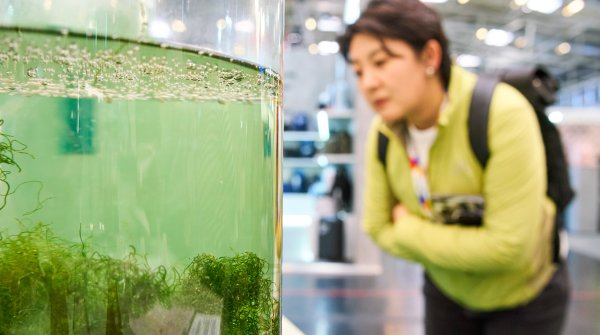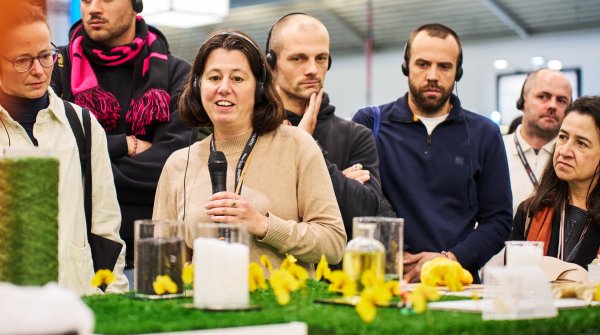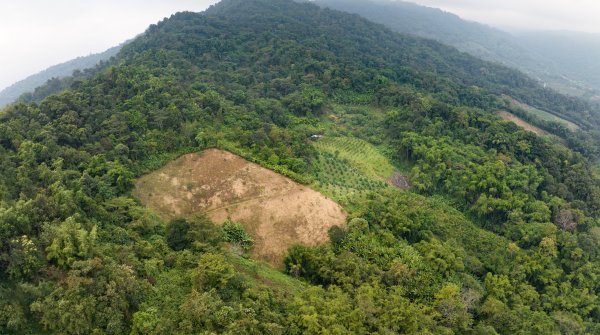In early July, activists from the climate protection group Extinction Rebellion gained access to ten golf courses in Spain in nighttime actions, where they filled the holes with cement or plants. The background? The golfers were "wasting water during one of the worst droughts Europe has ever experienced," the group said, explaining its action.
Two weeks earlier, something similar happened on the North Sea island of Sylt: activists of the "Last Generation" carried out what they called a "renaturation". They dug up the lawn, planted seedlings and scattered flower seeds. They exchanged the golf flags for a green sign that read "Nature Preserve."
Why are golf courses now on the agenda of climate change activists? How much does golf harm the environment and what are course operators and organizations doing to improve sustainability?
Mass sporting events, with their media impact, are the ideal place for protests. Most recently, an action at the Diamond League of track and field athletes in Stockholm caused a stir: Three activists from a Swedish group, whose name translates as "Restore Wetlands," blocked the lanes with placards during the 400-meter race and were nearly knocked down by the athletes. In the recent past, for example, protests against the construction of the Olympic stadium in Tokyo or the new soccer stadium of SC Freiburg achieved great media attention.
What's new is that the actions are increasingly taking place in empty sports facilities where there aren't dozens of TV cameras following the action, broadcasting the message in real time to the entire world. What's behind the worldwide protests on ordinary golf courses?
50 to 80 hectares of land - that's how much space a golf course needs. Enough to build three farms on it. Then there is the area for infrastructure such as catering and parking. Golf, once a sport for the elite, has long since become a trend sport for the masses, and the demand for courses and thus land is correspondingly greater. Environmentalists criticize the loss of important habitats for flora and fauna. There are around 35,000 golf courses worldwide. In Great Britain, the No. 1 golf country in Europe, the total area is over 1,250 square kilometres, in Germany 480 - that's the size of half of Berlin.
To ensure that the grass always remains green and dense and the balls roll into the hole true to track, pesticides and fungicides were also used as standard. These can be toxic, and their degradation products can get into the groundwater and contaminate it. Through strict pesticide laws, soil testing and groundwater controls, the EU has already taken action here – especially in Germany, the controls are strict. In other countries, however, it cannot be ensured that contaminating pesticides and fungicides are no longer used.
The biggest criticism of golf, however, is its water consumption: the irrigation system of a single golf course can use up to 200 million litres of water per year - and even more in hot regions like Florida or Andalusia, where there are several hundred systems. Water consumption is therefore enormous, and in times of drought and forest fires it is increasingly coming in for criticism.
Golf and sustainability - that doesn't have to be a contradiction in terms. Course operators can make a number of adjustments. For example, drought-resistant grass varieties are already on the rise, and stored rainwater or treated seawater can be used for irrigation instead of valuable tap water.
Some showcase plants also prove that it is possible to grow without pesticides - and that even bring benefits beyond sustainability. As fungi and other unwanted visitors become resistant to chemicals, increasingly powerful weed control agents have to be used, which after a while also damage the lawn itself. It is better to break the negative spiral. The manual treatment of infested areas, however, means a significantly higher effort for the groundskeepers. The EU has proposed legislation that would completely ban the use of pesticides in so-called sensitive areas - including golf courses - from 2024. Operators will be forced to act by then at the latest.
An unusual prime example of more sustainability in golf: on the tradition-steeped course at St. Andrews in Scotland, sheep graze on the fairways, making lawn mowers - and fertilizer - virtually superfluous. The roofs of the ventilation systems are equipped with solar collectors, and part of the energy thus generated flows into the national power grid.
Also the "Golf Environmental Organisation" an NGO based in Great Britain, also works toward sustainable golf and collaborates closely with international golf courses. Its claim is "A better future for golf, people and the world. The organisation wants to be the green engine for the golf industry worldwide and provides best practices for all to follow.
One example: The Broken Sound Golf Club in Florida had previously disposed of its green waste in dumpsters. Now, a fermentation system has been installed to turn the compost into fertilizer. All employees receive extensive training and are integrated into the club's sustainability vision. sustainability vision of the club sustainability vision.
And in Germany, the golf association is also pushing ahead with a number of sustainability projects. One of them is "Golf biodiverse". The background: On a golf course, around 50 percent of the area is enough for playing, and the rest can be converted into a biotope. This is precisely where the project comes in. The basic idea is relatively simple, explains Alexander Klose, a member of the board of the German Golf Association, in an interview with ISPO.com: "Participating golf courses must make two pieces of their area available. One hectare is simply left as it is, and scientists use the other hectare to implement very specific measures. The areas are to be enhanced in this way. Afterwards, the effect of the measures is measured. This could be certain plants on one site, or bees on another, for example. We're taking a very broad approach."
The Biodivers project is funded by the German Federal Agency for Nature Conservation with 2.7 million euros. Research teams from the universities of Freiburg, Münster and Kiel, as well as the Technical University of Munich, are to make the 64 participating plants more species-rich. A golf course that has been redesigned to be as close to nature as possible will then presumably no longer be visited by environmental activists.
- ISPO awards
- Mountain sports
- Bike
- Design
- Retail
- Fitness
- Health
- ISPO Job Market
- ISPO Munich
- ISPO Shanghai
- Running
- Brands
- Sustainability
- Olympia
- OutDoor
- Promotion
- Sports Business
- ISPO Textrends
- Triathlon
- Water sports
- Winter sports
- eSports
- SportsTech
- OutDoor by ISPO
- Heroes
- Transformation
- Sport Fashion
- Urban Culture
- Challenges of a CEO
- Trade fairs
- Sports
- Find the Balance
- Product reviews
- Newsletter Exclusive Area
- Magazine








